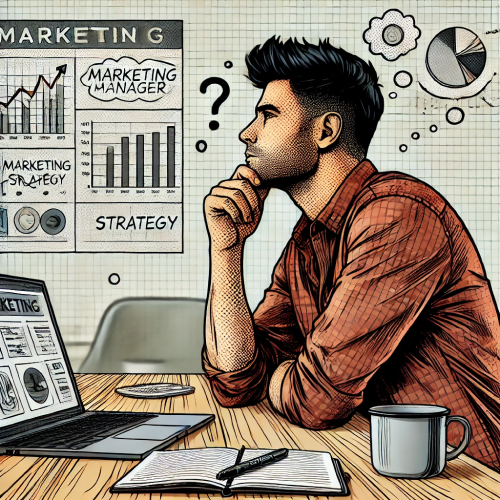Over the past two posts, we’ve broken down why a Unified Data Ecosystem, a comprehensive system that integrates and organizes all data sources within a business, is essential and the step-by-step process to build one.
But now, let’s get to the big question: What’s the payoff?
Because at the end of the day, this isn’t just about organizing your data—it’s about creating a system that drives real business growth.
Quick Recap
- First, we covered the problems with disconnected data—missed opportunities, inefficient marketing, and poor customer experiences.
- Then, we walked through how to fix it—integrating a CRM, collecting first-party data, automating reporting, and leveraging insights.
Now, What Happens Next?
In this post, we’re looking at the real-world impact of a Unified Data Ecosystem:
- Faster, smarter decisions that help you pivot when needed.
- Higher customer retention thanks to personalized experiences.
- Better marketing efficiency with measurable, predictable results.
- A competitive edge in a world where first-party data is more valuable than ever.
Let’s dive into the results you can expect when your data is finally working for you, not against you.
Faster, Smarter Decision-Making

The difference between data-driven businesses and those relying on gut feelings is the empowerment that comes with speed and accuracy in decision-making. With a Unified Data Ecosystem, businesses can spot trends early, identify opportunities faster, and adjust strategies efficiently, putting them firmly in control of their business direction.
Why It Matters
In today’s fast-moving market, businesses can’t afford to wait weeks for reports before making adjustments. When your data is centralized and processed efficiently, you can:
- Detect patterns faster—see shifts in customer behaviour without manual reporting delays.
- Pivot marketing strategies quickly—adjust messaging, promotions, or inventory based on evolving trends.
- Prevent revenue loss—identify bottlenecks before they become major issues.
📊 Fact: Data-driven businesses are 23x more likely to acquire customers and 6x more likely to retain them.
Example: Adjusting to Customer Behavior Quickly
Let’s say you run an e-commerce brand selling skincare products.
📌 Scenario Without a Unified Data Ecosystem:
- You launch a new moisturizer campaign.
- Three weeks later, your marketing team notices a drop in conversions but doesn’t know why.
- By the time you investigate, update messaging and relaunch, you’ve lost momentum and ad spending.
📌 Scenario With a Unified Data Ecosystem:
- Your system automatically detects a drop in add-to-cart rates for the new moisturizer.
- Within 24 hours, you see that most of the drop-offs are from mobile users.
- You test a different mobile-optimized landing page, and conversions bounce back within days instead of weeks.
How to Apply This in Your Business
1. Set Up Automated Dashboards for Early Trend Detection
- Use platforms like Looker, Google Analytics, or your CRM dashboard to monitor engagement, purchase trends, and drop-off points.
- Focus on directional trends instead of obsessing over minute-by-minute updates.
2. Automate Alerts for Key Metrics
- Set threshold-based notifications (e.g., if cart abandonment jumps by 20%, send an alert).
- Tools like Google Analytics, HubSpot, or Attio allow automated insights for rapid decision-making.
3. Shorten Decision Cycles by Removing Data Silos
- Ensure sales, marketing, and finance teams have the same access to customer insights so adjustments happen faster and with alignment.
Increased Customer Retention and Loyalty

Winning a customer once is great, but keeping them is not. That’s where long-term profitability comes in.
With a Unified Data Ecosystem, you’re no longer sending generic, one-size-fits-all messages. Instead, you’re creating personalized, relevant experiences that make customers feel understood and valued. And when customers feel valued, they stay.
Why It Matters
Retention is one of the biggest drivers of profitability.
- It’s cheaper to retain customers than to acquire new ones.
- Loyal customers spend more over time.
- Happy customers refer new business.
Example: Turning One-Time Buyers into Loyal Customers
Let’s say you run a subscription-based fitness brand offering on-demand workouts and wellness products.
📌 Scenario Without a Unified Data Ecosystem:
- A customer signs up for a one-month free trial of your workout platform.
- They use it a few times but never get follow-ups or personalized recommendations.
- Their trial ends, and they don’t renew. You lose them forever.
📌 Scenario With a Unified Data Ecosystem:
- Your system tracks their favourite workout styles during the trial.
- They get an automated email based on their preferences: “Hey [First Name], we noticed you love strength training. Here’s a 15% discount if you continue your journey with us!”
- A few days later, they receive a follow-up SMS reminding them their discount is about to expire.
- They renew their subscriptions not just because of the discount but also because they feel the brand understands them.
How to Apply This in Your Business
1. Create Personalized Customer Journeys
- Use first-party data to track customer behaviours and tailor their experience.
- Automate custom product recommendations and engagement emails.
2. Reward Loyalty and Engagement
- Implement tiered rewards programs (e.g., VIP perks for repeat buyers).
- Send exclusive content or early access offers to high-value customers.
3. Proactively Address At-Risk Customers
- Identify customers who haven’t engaged in a while.
- Send them a personalized win-back offer before they churn.
📌 Example:
If a customer hasn’t made a purchase in six months → an automated email offers them a special discount or reminds them of their unused loyalty points.

Grow your E-Commerce with a CRM
Learn how to use HubSpot's free tools in this online course.
- Step-by-step videos.
- Worksheets.
- Ready to use assets.
- 30min Strategy Call.
Higher Marketing ROI and Efficiency

Every business wants higher returns on marketing spend—but too many are guessing instead of tracking.
With a Unified Data Ecosystem, you don’t just see where your money is going—you understand what’s working, what’s wasting budget, and where to double down for maximum returns.
Why It Matters
Before we talk about ROI (Return on Investment), let’s first focus on the two metrics that many businesses struggle to measure:
1️⃣ ROAS (Return on Ad Spend) → Are your ad dollars actually bringing in revenue?
2️⃣ CAC:LTV (Customer Acquisition Cost to Lifetime Value Ratio) → Are you spending efficiently to acquire long-term, high-value customers?
Suppose you don’t have accurate data flow across your platforms. In that case, these metrics are just numbers on a spreadsheet—not actionable insights.
Example: Reducing Customer Acquisition Costs and Improving ROAS
Let’s say you run an e-commerce brand selling sustainable fashion.
📌 Scenario Without a Unified Data Ecosystem:
- You run Facebook and Google Ads but don’t track which channel brings in the most high-value customers.
- Your team optimizes for clicks instead of customer lifetime value (LTV).
- You keep spending on ads that bring in one-time buyers instead of loyal customers.
📌 Scenario With a Unified Data Ecosystem:
- You track which ad campaigns drive repeat customers (not just first-time purchases).
- You shift the budget away from low-value channels and reinvest in high-retention audiences.
- You lower Customer Acquisition Costs (CAC) while increasing Return on Ad Spend (ROAS).
How to Apply This in Your Business
1. Track ROAS by Marketing Channel
- Integrate your ad platforms (Google Ads, Meta, TikTok) with your CRM.
- Compare cost per acquisition vs. LTV per channel to focus on high-value sources.
2. Optimize CAC:LTV for Sustainable Growth
- Identify customer segments that generate the highest LTV and shift ad spending toward them.
- Use predictive analytics to prioritize campaigns that drive long-term revenue—not just quick wins.
3. Automate Campaign Adjustments Based on Performance Data
- Set ROAS thresholds to scale or pause campaigns automatically.
- Trigger retargeting campaigns for high-intent users who didn’t convert.
Competitive Advantage in a Privacy-First World
The marketing landscape is changing—fast.
With third-party cookies disappearing, stricter privacy regulations (GDPR, CCPA), and Apple’s iOS updates limiting tracking, businesses can no longer rely on old-school ad targeting and data collection methods.
The brands that win will be the ones that take control of their data—and that’s exactly what a Unified Data Ecosystem helps you do.
Why It Matters
- Third-party cookies are disappearing. Targeting and retargeting strategies need to shift toward first-party data collection.
- Privacy regulations are tightening. Businesses need transparent, consent-driven data collection methods to stay compliant.
- Customer trust is more important than ever. 75% of consumers expect brands to be clear about how they use data.
Without a strategy for collecting, storing, and leveraging first-party data, businesses risk losing access to key customer insights.
Example: Winning in a Cookieless World
Let’s say you run a DTC (direct-to-consumer) beauty brand.
📌 Scenario Without a Unified Data Ecosystem:
- You relied on third-party cookies to track customer behaviour and retarget ads.
- With iOS privacy updates, your Facebook ad performance drops because tracking is restricted.
- You lose visibility into what’s driving sales and can’t personalize your campaigns.
📌 Scenario With a Unified Data Ecosystem:
- You’ve collected first-party data through quizzes, email opt-ins, and loyalty programs.
- Instead of relying on external tracking, you use customer profiles from your CRM to build audiences for ads.
- Your retargeting is just as effective—because you’re using data that’s yours, not borrowed.
How to Apply This in Your Business
1. Shift Focus to First-Party Data Collection
- Encourage sign-ups with exclusive content, personalized recommendations, and rewards.
- Use interactive tools (quizzes, chatbots) to collect zero-party data (data shared directly by the customer).
2. Build Customer Profiles for Personalization
- Store data in your CRM and use it to personalize marketing messages across email, SMS, and paid ads.
- Create customer segments based on behaviours, purchases, and engagement history.
3. Strengthen Data Transparency and Compliance
- Be clear about how you collect and use data.
- Offer customers easy opt-in and opt-out controls to build trust.
Final Thoughts
We’ve covered a lot in this series. So let’s zoom out:
When you build a Unified Data Ecosystem, you unlock:
✅ Faster, smarter decision-making → Less waiting, more action.
✅ Higher customer retention and loyalty → Personalization that keeps people coming back.
✅ Stronger marketing efficiency and profitability → Optimized ROAS and CAC:LTV.
✅ A future-proof business in a privacy-first world → First-party data that gives you full control.
This isn’t just about better data—it’s about building a long-term sustainable, scalable, and competitive business.



